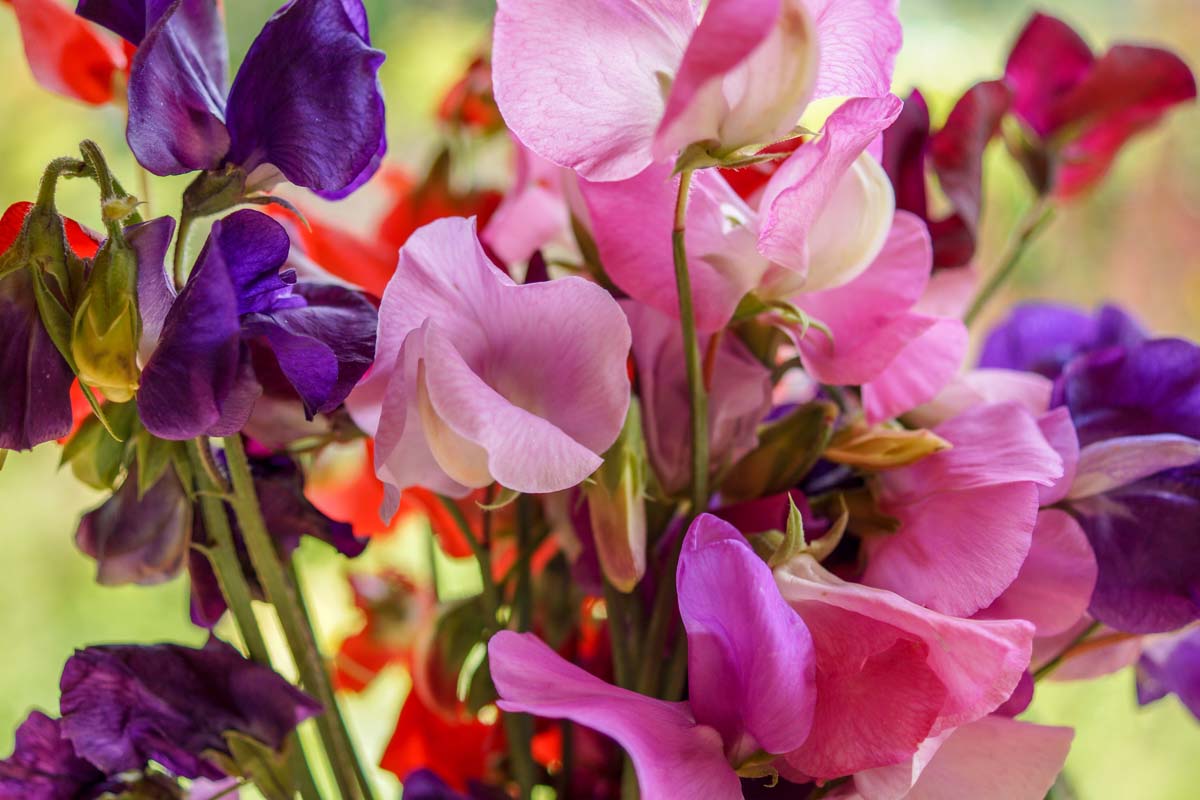Description
Lathyrus –
There are about 150 species of annual and herbaceous or evergreen perennials in this genus. They occur in sunny, sandy or pebbly banks, grassy slopes, wasteland, or open woodland in Northern temperate regions, Northern and Eastern Africa, and temperate South America. They are grown for their showy, pea-like, often scented flowers, in many colors held either single or in racemes followed by flat seed pods. Stems are usually winged, and bear alternate, pinnate leaves. Many are climber (with tendrils), others are clump forming. The climbers are useful for growing through shrubs or over a bank. L. odoratus is suitable for a trellis or arch, or an annual border for cut flowers. Clump forming species and cultivars are suitable for a rock garden, woodland garden, or herbaceous border. Seeds may cause mild stomach upset if ingested.
Grow in fertile, humus rich, well drained soil in full sun or light dappled shade. Climbers need support. Deadhead regularly. Divide perennial species in spring.
Prone to slugs and snails, pythium root rot, powdery mildew, rust, gray mold, and various leaf spots.
L. odoratus – Sweet Pea – This vigorous annual climber from Italy grows at least 6′ feet tall. From winged stems it carries mid to dark green leaves consisting of one pair of ovate-elliptic leaflets, to 2 ½” long. From summer to early autumn it bears racemes of 2-4, sweetly fragrant flowers, to 1 ½” wide and purple wings and keels. Makes excellent cut flowers. Many cultivars have been developed including dwarf , and non climbing.
Continental Group – grows 3-3 ½’ feet tall and are semi climbing, and bear racemes of up to 5 flowers in shades of red, blue, pink, or white, with flat standards and slightly waved, spreading wing petals. Suitable as a bush and for cutting. Requires support.
Zones 9-10





